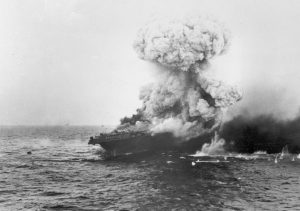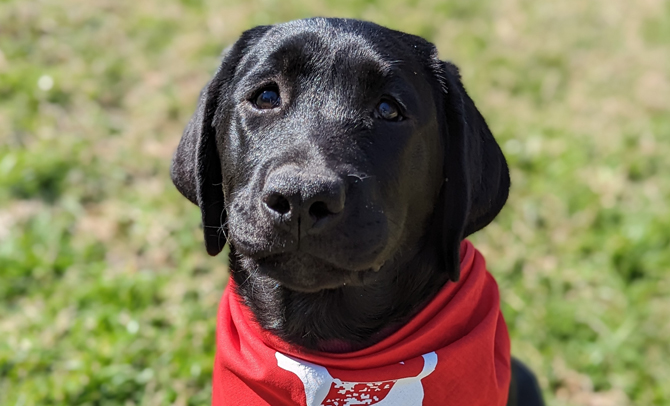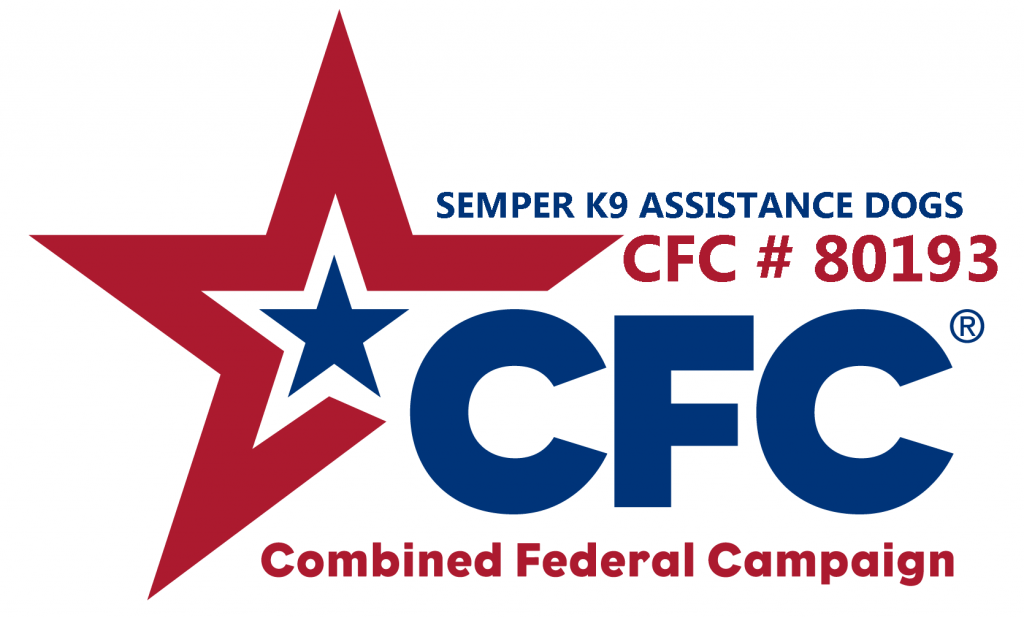Coral
Semper K9 is proud to announce the acceptance of Coral into our Service Dogs for Veterans Program. Coral is an English Lab donated by Sliding G Ranch. Coral is named in honor of all US Servicemembers who were involved with the WWII Battle of the Coral Sea.
 The Battle of the Coral Sea, from 4 to 8 May 1942, was a major naval battle between the Imperial Japanese Navy (IJN) and naval and air forces of the United States and Australia. Taking place in the Pacific Theatre of World War II, the battle was the first naval action in which the opposing fleets neither sighted nor fired upon one another, attacking over the horizon from aircraft carriers instead.
The Battle of the Coral Sea, from 4 to 8 May 1942, was a major naval battle between the Imperial Japanese Navy (IJN) and naval and air forces of the United States and Australia. Taking place in the Pacific Theatre of World War II, the battle was the first naval action in which the opposing fleets neither sighted nor fired upon one another, attacking over the horizon from aircraft carriers instead.
To strengthen their defensive position in the South Pacific, the Japanese decided to invade and occupy Port Moresby (in New Guinea) and Tulagi (in the southeastern Solomon Islands). The plan, Operation Mo, involved several major units of Japan’s Combined Fleet. Two fleet carriers and a light carrier were assigned to provide air cover for the invasion forces, under the overall command of Admiral Shigeyoshi Inoue. The U.S. learned of the Japanese plan through signals intelligence and sent two U.S. Navy carrier task forces and a joint Australian-American cruiser force to oppose the offensive, under the overall command of U.S. Admiral Frank J. Fletcher.

On 3–4 May, Japanese forces invaded and occupied Tulagi, although several supporting warships were sunk or damaged in a surprise attack by the U.S. carrier Yorktown. Alerted to the presence of enemy aircraft carriers, the Japanese fleet carriers advanced towards the Coral Sea to locate and destroy the Allied naval forces. On the evening of 6 May, the two carrier fleets closed to within 70 nmi (81 mi; 130 km) but did not detect each other in the darkness. The next day, both fleets launched airstrikes against what they thought was the enemy fleet carriers, but both sides actually attacked other targets. The U.S. sank the Japanese light carrier Shōhō, and the Japanese sank the Sims, a destroyer, and damaged the fleet oiler Neosho. On 8 May, both sides finally located and attacked the other’s fleet carriers, leaving the Japanese fleet carrier Shōkaku damaged, the U.S. fleet carrier Lexington critically damaged and later scuttled, and the fleet carrier Yorktown lightly damaged.
Both sides having suffered heavy aircraft losses and carriers sunk or damaged, the two forces disengaged and retired from the area. Because of the loss of carrier air cover, Inoue also recalled the Port Moresby invasion fleet. Although the battle was a tactical victory for the Japanese in terms of ships sunk, it has been described as a strategic victory for the Allies. The battle marked the first time since the start of the war that a major Japanese advance had been turned back. More important, the damage to Shōkaku and the aircraft losses of Zuikaku prevented both ships from participating in the Battle of Midway the following month.
If you would like to make a gift in honor of servicemembers who fought during the Battle of the Coral Sea to benefit Semper K9’s Coral’s training & expenses please visit http://donate.semperk9.org. For sponsorship information please email shannon@semperk9.org.





